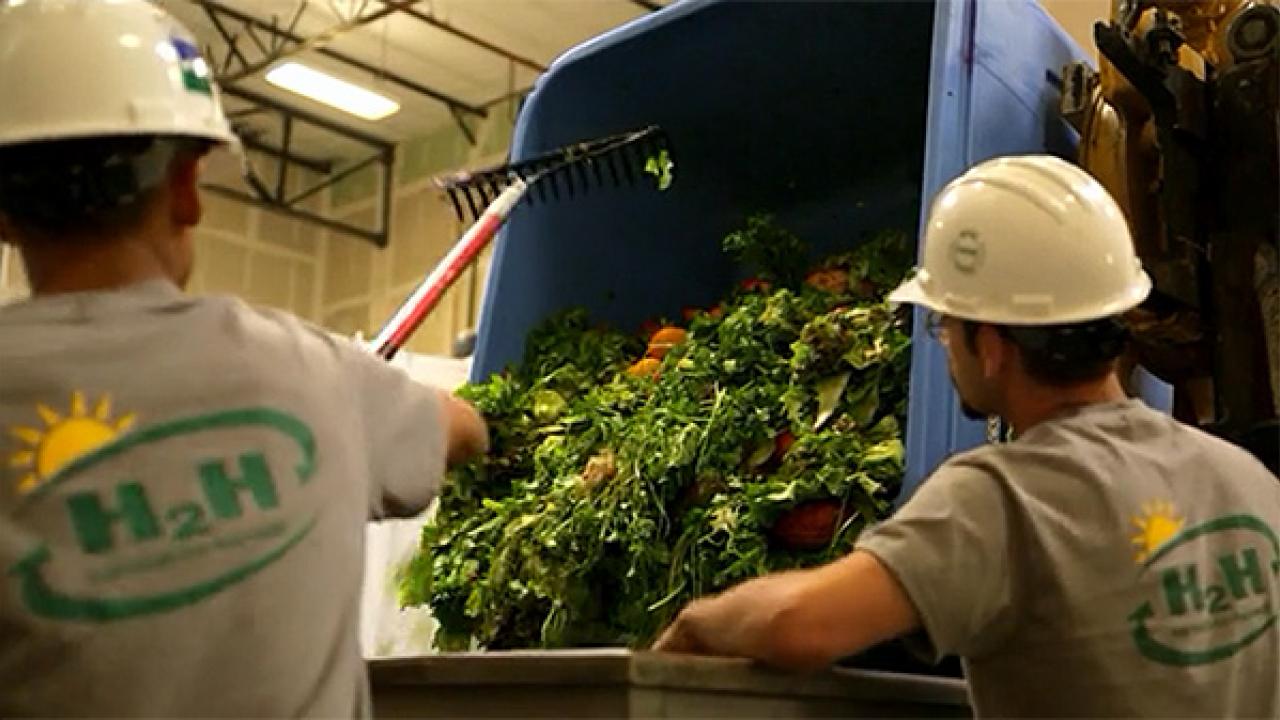
Turning food waste into healthy soil
UC Davis helps study “fork-to- farm” fertilizer
A Sacramento company that turns food waste into liquid fertilizer has launched a three-year almond trial at UC Davis to test the product’s effect on crop production, nitrogen leaching, and soil health.
Working with Professor Edwin Lewis with the UC Davis Department of Entomology and Nematology, California Safe Soil is also conducting ongoing trials throughout the state with several other commodities, including berries, lettuce, and tomatoes.
“It works quite well at reducing nitrogen use, while providing crops the nutrients they need,” Lewis said. “From what we’ve seen, it can cut nitrogen use in half.
Brothers Dan and Dave Morash launched California Safe Soil in 2012 with a commitment to convert leftover grocery-store food into a nutrient-rich soil amendment.
“A typical grocery store throws away 500 pounds of food a day,” said Dan Morash, company CEO. “The food is no longer edible for humans, but it has tremendous nutrient value to life in the soil—supporting bacteria, fungi, worms, and other biota.”
California Safe Soil recently expanded beyond its pilot phase into a new facility at McClellan Business Park where it can recycle up to 32,000 tons of food waste each year. It contracted with Save Mart Supermarkets to pick up food too old to sell or donate.
“Fruits, vegetables, meat, baked goods, anything but dairy,” Lewis said.
The liquid fertilizer—which the company calls Harvest-to- Harvest or H2H—can be produced in about three hours through a special procedure of grinding, heating, and breaking it down with enzymes to speed up the process. Standard compost can take several months to create, and it’s heavy and more difficult to spread over vast acres of farmland. Farmers can use their own equipment to distribute the liquid fertilizer through drip lines.
At UC Davis, Lewis and his team are looking at several aspects of Harvest-to-Harvest use, including:
- What’s the cumulative effect of the liquid fertilizer on crop yield, soil fertility, soil structure, and the soil’s ability to hold water?
- What’s the best balance of conventional and liquid fertilizer to optimize crop yield and reduce nitrogen leaching into groundwater?
Harvest-to- Harvest is currently being used on about 13,000 acres of farmland in California on crops such as strawberries, leafy greens, tomatoes, carrots, almonds, and walnuts. The company’s new commercial facility has the capacity to produce enough liquid fertilizer for 128,000 acres of farmland. “We call it the fork-to- farm system, because it returns otherwise wasted food back to the land to replace the organic matter used in the production of the previous crop,” Morash said.
Media contact(s)
Diane Nelson, College of Agricultural and Environmental Sciences dean's office, 530-752- 1969, denelson@ucdavis.edu
Edwin Lewis, Department of Entomology and Nematology, 530-754- 7659, eelewis.ucdavis.edu